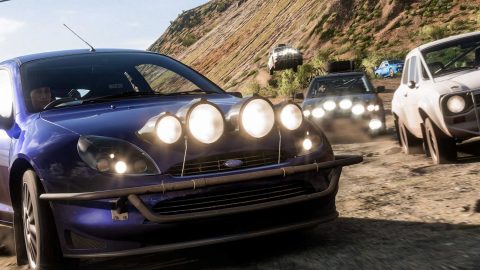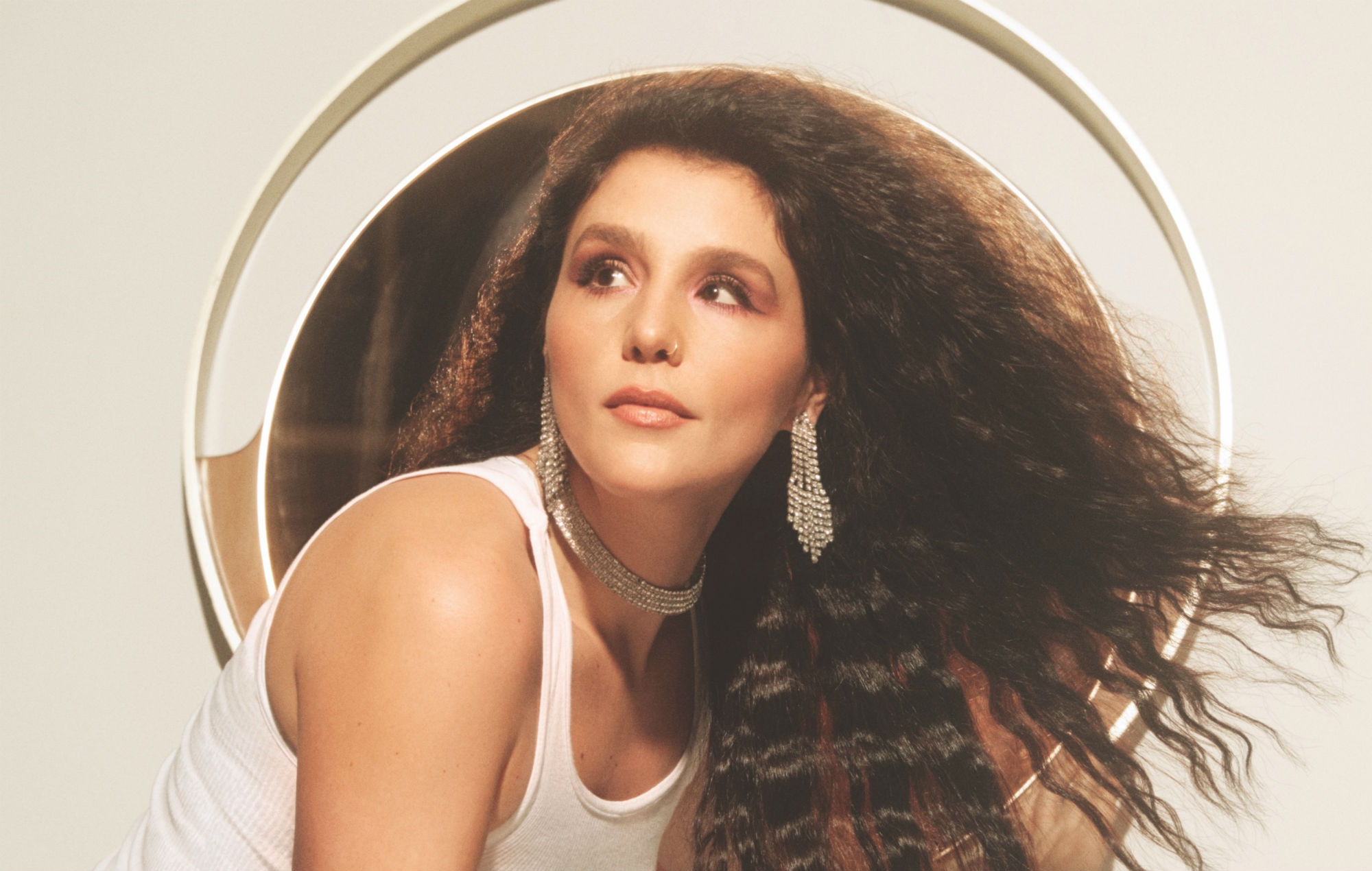
Here we are again, for another “Year of VR.” The virtual reality revolution ended up being rather less widespread than several people produced as Oculus ambled onto the scene, but the PSVR2, Sony’s latest and greatest virtual reality headset for use with the PlayStation 5) offers one of the easiest paths to high-end VR possible, if you can afford the price tag.
- READ MORE: The best PS5 games to play in 2023
There have been several generations of VR headset over the last few years and to save you the boredom of explaining what virtual reality games actually do, let’s just say it’s a way to play games in a completely unique setting. Early VR dropped you into a 3D space and let you interact with simple controllers and in the original PSVRs case, often just your regular PlayStation 4 controller. Now, a good VR game will immerse you into a world and let you interact with it with hand controllers that accurately simulate your hands and let you really feel like you’re in that world.
Sony’s first attempt at virtual reality, the PSVR, was released back in 2016 as one of the earliest attempts at high-end virtual reality. Unfortunately, it was fiddly, required a lot of cables and peripherals to work properly and released shortly before Sony added HDR to the PS4. The passthrough box for the PSVR wasn’t compatible with the new shiny HDR feature which meant a lot of juggling cables if you wanted to experience HDR for regular games and also play in VR.

It was still incredible technology, but there were so many hurdles to actually playing a game that mine very quickly ended up gathering dust on a shelf. This is important context because I’ve found a consistent problem with virtual reality gaming is that however much fun it is, any barrier at all means I’m more likely to sprawl in my chair for something simpler.
PSVR2 is simple. It connects with a single 4.5m USB-C cable to the front of your PS5 and there’s a power button on the front. Thumb the power button, put it over your head and that’s it, you’re in cyberspace. It can stay connected, and as long as you keep your controllers charged (with rechargeable batteries that are also juiced up via USB-C) then you’re good to dip in whenever.
Visually, the PSVR matches the PS5’s matt plastic look, although with a more rounded look that works aesthetically. The PSVR2’s design is a smart piece of communicating intent. Lots of early VR gear had a boxy look screaming “this is techy, and hard to approach” and that was an accurate representation of the tech itself. The PSVR2 looks more like a lifestyle accessory than the ominous look of an Oculus Rift or Valve’s Index headset, which reflects how easy it is to use.

There’s a huge upgrade to the tech, too. Gone are the glowy PS Move controllers and a PS camera for a rough attempt at room scale. Here, inside-out tracking effortlessly scans the room around you – you can see the process during the initial set-up and it’s impressive as it paints everything in eyeline and then asks you to mark part of it as a play area. For a full roomscale experience you need a 2×2 metre space, which is difficult in some UK houses. I personally don’t have a two-metre square in the middle of my living room, but it was worth cheating a bit just so I can play with true roomscale.
The resolution is 2,000 x 2,000 (4.1mp) for each eye, with RGB and OLED. This is a lot better than that seen on the PSVR, and better by a little way than just about every headset on the market currently barring the HP Reverb G2. The refresh rate of (up to) 120hz means it’s at the top of the class there too. Four out-facing cameras handled that external tracking, while two internal cameras track your eyes. It’s lighter than the original PSVR 2, coming in at 560g, but the important thing is it’s light enough that you don’t feel it on your face as you play.
Despite years of fondling tech for money, I’ll confess I’m not the most technical person in the world. Processing power, benchmarks and even resolutions largely pass me by in favour of how a game feels to play, and whether I notice any hitches. I’ve got a few different headsets here and I think the PSVR2 is my favourite so far. I haven’t noticed any slowdown or weird technical bugs beyond my “hand” occasionally getting caught on things for a moment, so it gets top marks on that front.

Talking of hand tracking, the controllers for the PSVR 2 are probably my favourite in VR so far. They’re ergonomic and comfortable to hold for a long period of time, and the battery life lasts for around 4 hours, although I often found myself charging them before a low battery warning came up as the tracking would start to be a little less accurate, usually approaching this four-hour mark. The buttons are easy to use, and there’s still a share button here which allows you to get video and screenshots from inside the VR world with ease. I struggled in some games to scroll through menus with the thumbstick, particularly downwards, due to the somewhat restrictive circle around the outside in combination with my giant hands, but it’s very rare that I have an occasion to move the right thumbstick down in the games that I’ve played.
When it comes to games, we’ll be offering reviews of a few of these in the coming weeks, but there’s a good mix here. Launch title Horizon Call of the Mountain is sublime, and I’ve spent more time than I’d like to admit playing multiplayer shooter Pavlov, which has a ready-made playerbase due to crossplay with the Meta Quest 2 version of the game. There is a host of games available already as many titles have been given a small VR update for the launch of the PSVR2, and many titles that were available on the PSVR or on other platforms have now come to the platform. Quality of these PSVR ports differs and at the low end it feels like you’re inside a locked room trying desperately to interact with everything until you find the one object that is actually functional. There are some high-end options though, and really I’m most interested in what is developed specifically for the PSVR 2 moving forwards, or for the oft-rumoured port for Half Life: Alyx to arrive.

For me, multiplayer is what really makes virtual reality. The other players are so much more human when you can see a light tilt of the head, or high-five after something cool happens. It adds a lot to multiplayer shooters because you can do ridiculous things like play dead or drop your gun in surrender, but there are also phenomenal moments like tossing your grenade to a teammate so he can pull the pin and throw it through a doorway. The extra interactions that you can have make it a great way to generate anecdotes, but also just a great way to hang out. Years ago I interviewed the founder of a VR start up and we played chess and walked around a forest. As fidelity increases and what you can do with people in multiplayer VR gets more complex, that same childlike sense of joy hasn’t gone away.
Many of the worlds you can explore in the PSVR2 are good to sit and enjoy for a bit, even alone. Is it nerdy to want to hang out for a bit and just enjoy a virtual space? Perhaps. But spending an hour or two on a boring weeknight hanging out in a new world is an experience that I’d recommend for just about anybody. Kayak VR: Mirage has become a nice place for me to just exist, in a photorealistic world where I don’t have to worry about my real-world inability to swim.
Unfortunately, there’s the issue of the price. The PSVR 2, with all of its shiny bells and whistles, sells for £529. There’s no doubt in my mind that it’s worth the money, but it’s currently selling for the same price as the PS5 and two DualSense controllers. It’s a tough sell at that price, especially during the cost of living crisis. As it’s currently only being sold from Sony directly, that price is unlikely to change soon. Still, despite the price – and expect to hear a lot about the price – it really is a bloody impressive piece of tech.
PSVR2 headsets are available now.
Verdict
Sublime fun and a unique experience, the PSVR2 cuts all the nonsense of virtual reality and delivers a consumer-friendly approach that’s sure to delight. A well-made headset, top of the class tech specs and comfy hand controllers only sweeten the deal, but the price makes it hard to recommend despite the obvious quality on show.
Pros
- Best in class tech
- Great game selection
- VR without the bullshit
Cons
- Price will make this inaccessible to many
- Several rereleased games make launch catalogue patchy in quality
The post PSVR2 review: VRy exciting appeared first on NME.







